Mycobacteriosis aka fish tuberculosis (TB) is a chronic bacterial infection in fish caused by a species of mycobacterium known as Mycobacterium marinum. This disease is seen mostly in aquaculture businesses with large populations of fish – particularly those that rely on intensive aquaculture systems.
To date, there have been reported cases of this disease in different parts of the world including the U.S., Canada, Norway, and France. However, it is one of the lesser-known common fish diseases, as it usually afflicts any large population of fish composed of trout, carp, and salmonids.
Like most infections of fish, mycobacteriosis can have devastating effects. Therefore, we will be looking at ways to detect, treat, and most importantly, prevent this potentially fatal disease.
Is Fish Tuberculosis Real?
Technically speaking, fish do not get tuberculosis. Tuberculosis is a disease in humans and other mammals. The proper name for this condition affecting fish is mycobacteriosis.
“Fish tuberculosis” is a term that’s commonly used to describe this fish disease because the clinical signs are similar to tuberculosis disease in humans, but sticklers for accuracy will opt for the term “mycobacteriosis” instead. We will be using these terms interchangeably in this article.
What Causes Mycobacteriosis aka Fish Tuberculosis?
Mycobacterium marinum, which belongs to the group of bacteria known as “acid-fast” bacilli, causes this illness. M. marinum can be found in fresh water and saltwater environments around the world; though it is often found in aquaculture environments.
This causative agent was first discovered in the late 1940s after being isolated from a population of fish that had been caught on an island near Seattle, Washington. Researchers found out that the bacterium can survive and grow in water temperatures of up to 104°F for a period of time.
Let’s take a look at some of the factors that may cause your fish’s odds of infection:
Exposure To Sick Fish
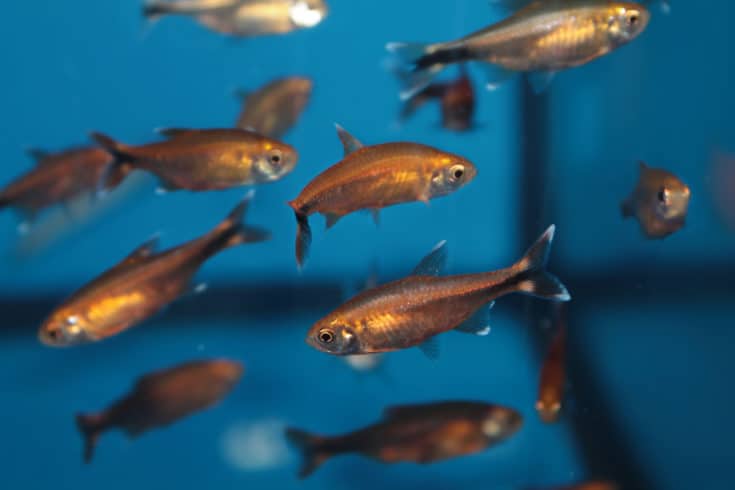
Your fish’s risk of M. Marinum infection increases they come into direct contact with fish who are carriers. The fish pathogen that causes this disease can spread through water, jumping from mycobacterium-positive fish to the general population of fish.
The main route for transmission within an aquarium environment is direct contact between mycobacterium-positive fish and uninfected fish. Any wounds or abrasions on your fish’s skin increase the likelihood that it will contract this disease since bacteria can enter through these openings in its body.
This is especially true with ornamental fish such as koi carp, which commonly have open sores on their bodies from fighting with other members of their own species during mating periods.
Presence Of Bacterium On Plants And Other Surfaces
The bacterium that causes fish TB can survive for long periods of time outside aquatic organisms. In fact, it has been known to be able to live in water and moist environments without a population of fish present at all! This means that any items within your aquarium such as rocks, driftwood, or even artificial plants may have this bacteria on them.
Under the right conditions, and in a humid environment such as your aquarium, this bacterium can thrive and reproduce on various surfaces. So if it’s not removed from these items before they are added to your tank or pond you may find yourself with an outbreak of this fish pathogen.
Ideal Spreading Conditions
Most infections of fish thrive when water conditions are ideal. Mycobacterial infections spread best in tanks that have a high water temperature. For example, it can spread rapidly through a population of koi carp when ambient air temperatures are between 68-86°F.
In addition, Mycobacterium marinum prefers a pH range between neutral and alkaline, which is another reason why koi carp are so susceptible to fish TB. They have the tendency to be kept in tanks with high water hardness (alkalinity), elevated carbon dioxide levels, and low oxygen content all of which contribute towards encouraging this disease’s spread!
Poor water conditions also make it likelier for the disease to take hold and spread. For this reason, you should always keep your fish’s aquatic environment pristine. Good water quality will also strengthen your fish’s immunity.
Transferrence Via Fish Handler
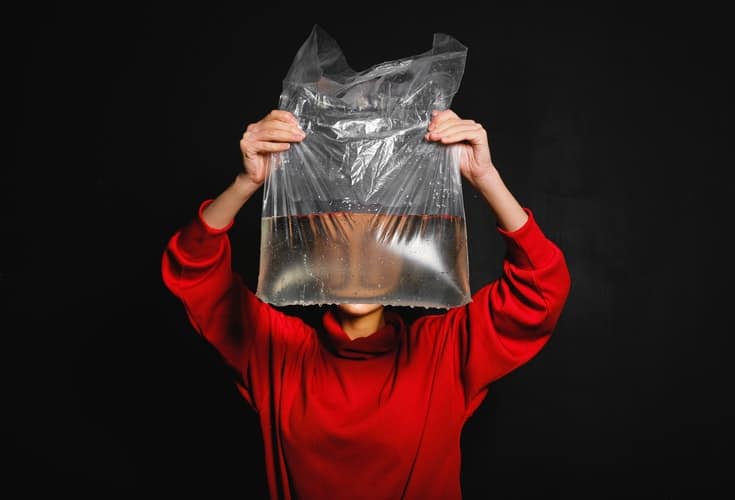
Humans can be a source of transmission due to our tendency for contact with aquarium specimens. This is why it’s important that all equipment used with your fish is properly sterilized between uses and after being removed from the tank containing infected animals.
Have you ever handled an infected fish, or perhaps worked in a facility where pet stores are kept? If you did, be sure to thoroughly wash your hands and arms with soap and warm water. This is especially important if your skin comes into contact with aquarium water since it can M. Marinum.
How To Prevent Fish Mycobacteriosis
The best way to avoid this disease is by preventing its spread in the first place. This is because once it has entered your tank or pond, there are very few options for treating the infected fish.
Here are a few key things you can do to prevent mycobacteriosis outbreaks in tank or pond:
Quarantine New Arrivals
The first thing you can do to help prevent this disease is to adhere to proper quarantine protocols for all new aquatic animals before adding them to your aquarium or pond – especially if they have signs of underlying illnesses such as skin infections.
A general rule of thumb when quarantining any animal that has been exposed to another species (including humans) is to keep it in a completely separate tank from all your healthy animals for at least two weeks.
This is because it takes roughly this long for the M.Marinum bacterium to manifest itself in outwardly healthy animals, which means they are actually infectious during this time period but without showing symptoms of illness.
Isolate Injured Animals From Healthy Populations
A different aspect of proper quarantine protocols involves, isolating any fish that has been injured or sick from the rest of your population. This will help prevent the spread of this disease as well as treat the fish in question more easily if it becomes infected.
Of course, your best bet for prevention is to source your fish from reputable dealers. These are the kinds of facilities with measures in place to make sure that all fish are injury-free and healthy before being shipped to their customers.
They employ professional aquarists who know how to properly quarantine new acquisitions before they are allowed into an existing population, which greatly reduces their chances of being exposed to this bacterium in the first place!
Sterilize Equipment & Surfaces
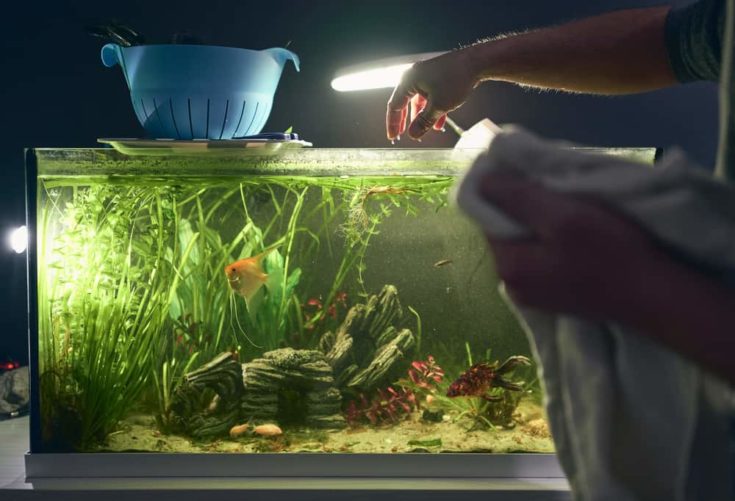
Finally, you should also be sure to sterilize any equipment or surfaces that have come into contact with your infected animals before using them again on your resident fish. This will help prevent the spread of this disease while also keeping your healthy fish safe.
If you’re planning on cleaning out your tank or pond, be sure to do so at least one week before adding any new fish to avoid exposing them to the bacterium that causes this disease.
If you do wish to sterilize materials used with your specimens, be sure to avoid using detergents, bleach, or alcohol. Instead, boil or soak your equipment in very hot water (over 70°C/158°F), for at least 20 minutes. This is because most bacteria can’t survive temperatures greater than 50-65°C (122-149°F).
Why are M. Marinum Infections Difficult to Detect?
Diagnosis is difficult because M. Marinum that causes it can lie dormant for years without manifesting any visible clinical signs.
This is why all specimens suspected of harboring an infection should be immediately isolated and closely monitored by a professional aquarist, especially since this condition tends to affect aquarium fish more than pond-dwelling species.
In addition, diagnostic testing is an expensive process that can stress your fish out. The most common method for confirming this disease is through radiographs or MRIs. These have to be done with special equipment and personnel trained in the process of taking these images.
The lack of visible outward symptoms and heavily involved diagnosis procedure makes fish mycobacteriosis a disease that’s harder to spot than most.
Signs and Symptoms of Fish Tuberculosis
The symptoms of mycobacteriosis are very similar to the disease in humans. The main difference is that symptomatic fish get large, non-painful lumps rather than the highly infectious open lesions associated with human tuberculosis. Other symptoms include scale loss, lethargy, and the signs discussed
Tumors In Fish
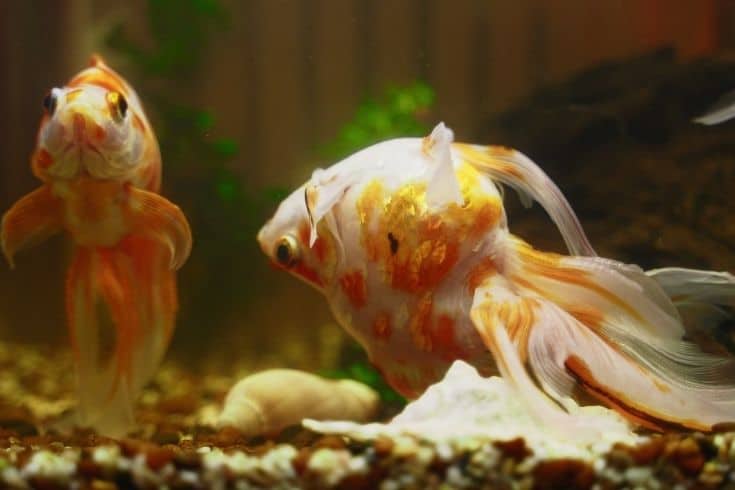
Fish infected with this disease may develop large superficial lesions on their bodies and visceral organs. Infected tissue forms deep lesions that can be either solid or filled with fluid and pus.
These lumps form as one of many immunosuppressive symptoms because the bacterium that causes this disease typically overgrows in one area, eventually leading to fluid accumulation. In most cases, they take the form of purple lesions that may also cause scale protrusion.
Superficial lesions in fish tissue rarely develop into open skin ulcers because the fish tend to instinctively avoid any physical contact with these lumps. However, because they are often found on the internal organs, they need to be treated quickly. If you spot any tumors in fish, be sure to consult a vet immediately.
Blindness & Cloudy Eyes
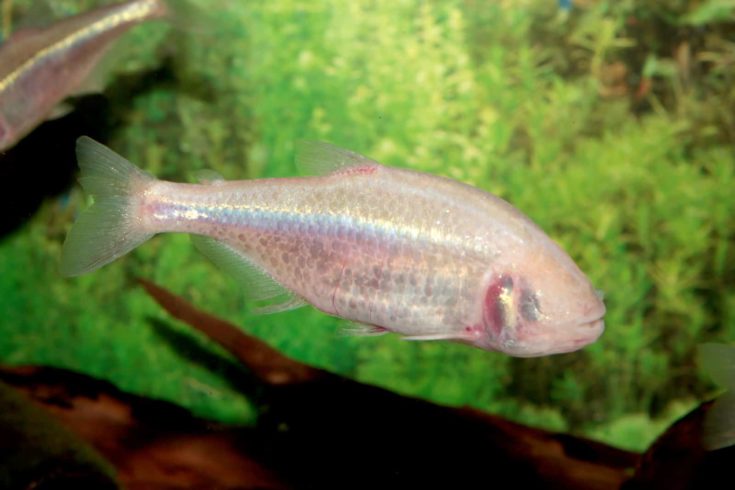
In addition to these lumps, your fish may also lose their sight due to the infection spreading into their eyes. While this is certainly disconcerting, it’s rare for the infection to spread into a fish’s eyes.
In fact, these blind spots are usually located in areas where they’re not easily visible from outside of the tank or pond!
Unfortunately, cloudy eyes are part of the range of immunosuppressive symptoms produced as a result of your fish’s immune system cranking up to fight this awful fish disease
Abnormal Behavior & Tendency To Swim Upstream
Other typical signs include a range of abnormal behavior. Some specimens will act lethargic or sluggish while others may become more aggressive than normal. Many fish will also lose their appetite
However, one common symptom is that your fish will often swim upstream in their tank or pond when they usually prefer to stay at rest near its bottom levels!
This happens because their weakened immune system leaves them more susceptible to infections, leading them to instinctively avoid any contact with the water.
Blood In Stool
Fish suffering from mycobacteriosis may also show signs of having blood in their stool. This happens because M. Marinum also overgrows in a fish’s digestive tract.
Once your fish’s intestinal lining has an injury, they will secrete fluids that may contain blood. This is why you’re likely to see traces of blood in their stool and the water around them.
The extensive damage is done to the lining of their digestive tract also leads to severe nausea, discomfort, and loss of appetite.
Loss of Scales
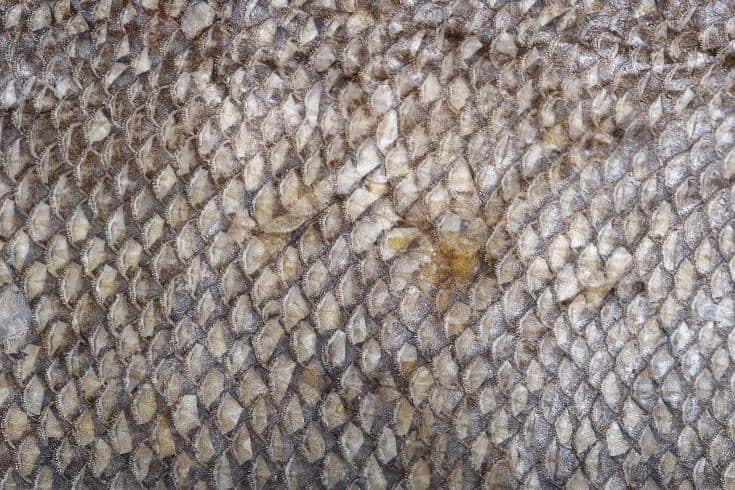
Scale loss is another symptom you may see in fish with mycobacteriosis. This happens because the bacterium that causes this disease typically overgrows within a fish’s skin and tissue, leading to loss of scales and eventually causing their fins and tails to fall off!
The reason why your fish will lose its scales is that they’re simply dislodging them in an effort to prevent the spread of the bacterium.
Treatment of Fish Tuberculosis
Like most fish diseases, the best treatment is through prevention. This disease can be very difficult to detect if your aquarium or pond has already been infected with this bacterium as this is a systemic disease.
However, once you’ve detected any symptoms of this disease in your fish, there are a few things you can do to treat it. Let’s take a look at a few key methods:
Contain the Infection
The first thing you should do if you’ve detected this systemic disease is to immediately quarantine the infected fish. This will prevent them from infecting the general population of fish while they recover.
Setting up a hospital tank will also allow for easier treatment options if they can be treated at all. For example, if your sick fish has developed secondary infections, you may be able to use antibiotics and anti-tumor medication without affecting your resident fish.
Once your fish have been quarantined in a separate tank, we can look at several other treatment options.
Add Salt and Vitamin C
Adding salt and Vitamin C to their water has been shown to help eliminate M. Marinum.
Not only does it make it more difficult for the bacterium to survive, it also kills off the infection before it gets a chance to spread throughout your pet’s body.
Salt can also help reduce any swelling, while Vitamin C can work to boost the immune system naturally.
Learn more about different types of aquarium salt here.
Increase Your Water Temperature

Increasing the temperature of your aquarium or pond will make it easier for this disease to be eliminated. Higher temperatures make M. Marinum weaker and easier for your fish to fight.
However, you need to gradually expose your fish to these higher temperatures rather than increase them overnight as doing so may further stress out their immune system and cause additional harm.
Medication & Antibiotics
Sometimes, the best course of action is to go to a vet specializing in exotic pets. They will run diagnostic tests for mycobacterial infections, before prescribing the most effective treatment.
Examples of medications used to treat this disease include:
- Meloxicam (Metacam) for pain and inflammation
- Erythromycin for topical treatment of skin infections
- Rifampin to treat internal infections
- Tetracycline, Azithro or Doxycycline used as an antibiotic.
- Chloramphenicol is also sometimes prescribed but can be very toxic so it should only be used under strict medical supervision.
Improve Their Nutrition
Finally, you can also make sure your fish are getting their fair share of nutrients to support the growth and repair of healthy cells. A nutritious fish meal provides your fish with the energy they need to fight off mycobacterial infections.
Whole fish, live worms, and shrimp are all excellent sources of protein while vegetable-based foods like peas, algae, spirulina, and spinach provide them with the vitamins they need.
Good fish meal can strengthen your fish’s immune system, which in turn can help them recover from mycobacteriosis faster.
FAQs
Is Fish Tuberculosis Fatal?
Yes – if untreated. With treatment, many of these infections can be eliminated or reduced to a controllable level.
The odds of recovery are higher if the infection is caught early. However, if the infection has spread throughout your pet’s body, it will be more difficult to treat and can result in death.
Euthanasia is also a viable animal welfare consideration if the infection has spread too far and your fish is suffering.
See also: Euthanizing A Fish Humanely
How Long Does It Take For Fish Mycobacteriosis To Develop?
It can take anywhere from a few weeks to several months before you notice any symptoms. Unfortunately, some cases aren’t detected until it’s too late and the infection has already spread throughout your pet’s body.
Some early signs of infection include lethargy, clamped fins, and cloudy eyes. The later stages of this disease come with symptoms such as weight loss, fin rot, tumors (swelling), and ulcers.
Do Fish Recover From Mycobacteriosis Or M. Marinum Infections?
Most of the time, yes. Treatment of fish tuberculosis is usually administered for at least two months so it can eliminate any hidden bacteria cells that may be hiding deep within the tissues.
The good thing is, many of these antibiotics are effective against both Gram-positive and Gram-negative bacteria so they can help boost your pet’s immune system as well.
However, if there was extensive damage done to the kidneys or liver before starting treatment it may not work because those organs may no longer function properly.
Can The Disease Lead To Human Infection?
Here’s the bad news: Yes. Mycobacteriosis can spread from animals to humans, although it’s rare and typically only occurs when people handle infected animals over a long period of time (i.e., farming). These are typically infections that occur within species barriers.
What Are Some Other Species Of Mycobacterium?
Other species of mycobacterium apart from M. Marinum:
- M. Celatum
- M. Intracellulare
- M. Smegmatis
- M. Gordonae
- M. Abscessus
- M. Kansasii
- M. Chelonae
What is Acid-Fast Staining?
This is a diagnostic test used to determine if acid-fast organisms are present. The process involves applying an acid solution that can dissolve the cell wall of the host cell and expose its contents so they’re easier for lab technicians to view.
In other words, acid-fast rods are then stained with acid-fast stains that help them stand out against the background.
Once the solution is applied, technicians use a special microscope with bright lights and lenses that can magnify tiny organisms (like bacteria) up to 1000 times their original size. Acid-fast positive organisms will turn bright pink, red, or orange when viewed under this type of magnification.
In Conclusion
As mentioned earlier, prevention is always better than cure so be sure to practice proper hygiene when caring for your fish. If you do discover any signs of Mycobacterium Marinum infection, then don’t hesitate to take your fish for a check-up right away.
In cases where the infection has already spread throughout your pet’s body, it will be more difficult to treat and can result in death so you should always keep this disease at the back of your mind. As with any common fish disease, early detection is crucial.
Now that you’ve read the article, let us know what you think in the comments below! Don’t forget to also share this article with a friend who might find it interesting.
